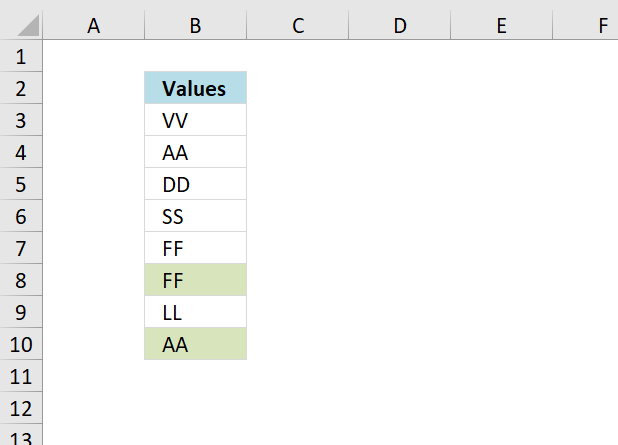


Using the Collections Object in VBA: This method is the fastest method as far as comparison in terms of speed goes.Using Range.RemoveDuplicates & Range.SpecialCells(xlCellTypeBlanks).Delete in VBA:.It basically consists of three arrays, Thelist: This consists of the expanding list of values to be filtered sArray: This array consists of the locations of the unique values and finally, TheUniqueList: Using Arrays – The following link ( ) explains this method in the “Power Formula Technique”.Some of these methods below should come to your rescue – While the Advanced Filter is a great way to filter, if you need to filter more than once, it can get quite painful. Filtering using a Criteria has many variants to it, this link provides more context ( ). The “Criteria Range” is used to filter out any desired/undesired criteria, in other words, filtering out the condition required. Copy to another location: This is the more useful option, which helps transport your list of unique values to the desired locationĮnter the location of the range to be filtered in “List Range”, and the location of destination in “Copy To”.To choose the appropriate search mode, press the corresponding button on the. Loss of data is inevitable, unless you have a copy of it Remove Duplicates in Excel allows you to find duplicated cells in rows or columns. Filter in-place: This option leads to filtering of the range in the current location.Remember to check the “Unique Records only” check box. The Advanced Filter (from the Data Menu) is the in-built mechanism in Excel to filter out the unique cell values of a variable/column/range. What if you’re using Excel 2003 or earlier? There are a variety of ways how you can achieve this – starting with the advanced filter, moving to more complicated but easy to replicate methods. Prior to Excel 2007, there was no in-built functionality in Excel that could easily remove duplicates from single/multiple column.Įxcel 2007 & Later – The Remove Duplicates in the Data tab does this with the click of a button. Filtering out the distinct values of a Column/Variable/Range is a very common need when working with Data.


 0 kommentar(er)
0 kommentar(er)
